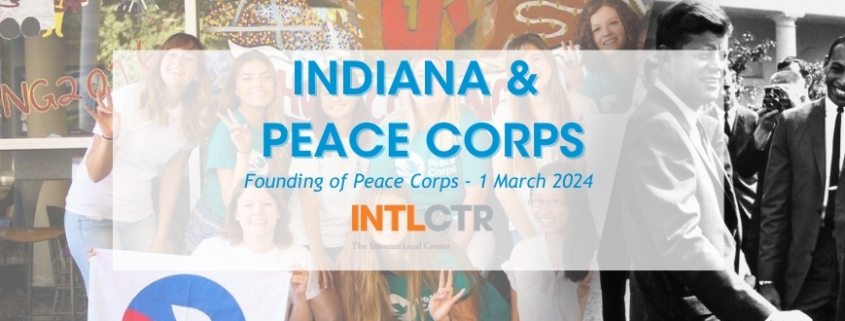Bridging Borders: A Journey through the History of Peace Corps
What is the Peace Corps?
In the early hours of October 14th, 1960, a spark ignited at the University of Michigan that would illuminate a path towards global service and cooperation. John F. Kennedy, then a senator and presidential candidate, stood before a fervent assembly of students, challenging them to venture beyond their borders and contribute to the betterment of humanity. This impassioned plea gave birth to the idea of the Peace Corps—a vision where young Americans would dedicate themselves to serving in developing nations, fostering peace, and advancing development.
From Inspiration to Action
Just two weeks after Kennedy’s stirring address, the wheels were set in motion. As President, Kennedy wasted no time and swiftly established the Peace Corps through executive order on March 1st, 1961. This seminal moment marked the official birth of an organization destined to leave an indelible mark on the world. With Tanzania and Ghana leading the charge as the first host countries, the Peace Corps embarked on its mission to promote goodwill and understanding across borders.
[Peace Corps] means diplomacy. It means friendship. It creates connection and fosters teamwork. It breaks down cultural barriers and helps us all to make the world a better, more unified, place.
-Stephanie Schuck, Executive Director, State of Indiana Cooperative Invasives Management & Returned Peace Corps Volunteer (Benin)
Adapting to Change & Upholding Principles
Over the decades, the Peace Corps has evolved to meet the challenges of a dynamic world while remaining steadfast in its core principles. Despite the shifting geopolitical landscape, its mission remains unchanged: to assist communities in need, foster mutual understanding between nations, and promote cultural exchange. Today’s Peace Corps volunteers, diverse in age and expertise, continue to embody the spirit of service envisioned by its founders.
Getting Involved
For those inspired to join the ranks of Peace Corps volunteers, the journey begins with a commitment to service and a willingness to embrace challenges. Host countries extend invitations based on their specific needs, and volunteers are matched with assignments that align with their skills and experiences. Despite the hurdles of language barriers, modest stipends, and basic living conditions, volunteers find fulfillment in making a tangible difference in the lives of others.
The Peace Corps was such a transformative experience for me. It was the first time I had the opportunity to live in a foreign country, learn Mandarin, and really get to know a culture that was very different from my own. Yet, during this experience, I found that my students, colleagues, and I had many more things in common – a deep love of family, respect for education, and a desire to make the world a better place. My Peace Corps experience in China was an opportunity to live out citizen diplomacy in real time.
-Kristie Johnson, PhD, Vice President of Development & External Affairs, The International Center & Returned Peace Corps Volunteer (China)
The Indiana Connection
Indiana stands as a testament to the enduring spirit of volunteerism and global engagement. With over 3,500 Peace Corps volunteers hailing from the Hoosier State, institutions like Indiana University – Bloomington (ranked 19th/20th nationally among higher education institutions in sending volunteers), Purdue University, and the University of Notre Dame have played pivotal roles in cultivating a culture of service and fostering partnerships with the Peace Corps. These educational collaborations serve as bridges, connecting local communities with the wider world and nurturing the next generation of global citizens.
Serving in the Peace Corps is an impactful opportunity to share “Hoosier Hospitality” while exchanging culture and knowledge with welcoming host communities abroad. Being immersed in a multi-ethnic country with different languages, religions, foods, opinions of the U.S., social norms, and pace of life taught me to be a more empathetic and tolerant human, something I try to put in practice back here at home with fellow Hoosiers whose life experiences and political persuasions differ from my own. More than 240,000 Volunteers have made countless global connections in the pursuit of peace and friendship over the years and I’m no exception; I met the love of my life and many Kosovar and American friends. After service, returned Peace Corps Volunteers (RCPVs) often continue mission-driven and community-based work with a global lens. In Indiana, our RPCVs are teachers, nonprofit leaders, public and private sector employees working toward the sustainable development of our communities.
-Lindsay Maliqi, local Returned Peace Corps Volunteer (Kosovo)
As we reflect on the storied history of the Peace Corps, we are reminded of its timeless message: that by reaching across borders and embracing diversity, we can build a more compassionate and interconnected world.
Sources:
[1] JFK Library: https://www.jfklibrary.org/learn/about-jfk/jfk-in-history/peace-corps
[2] Peace Corps and Indiana Summary: https://www.peacecorpsconnect.org/wp-content/uploads/2023/05/2023-Peace-Corps-and-Indiana-Summary.docx
By: Carley Jobe, Marketing & Communications Intern

